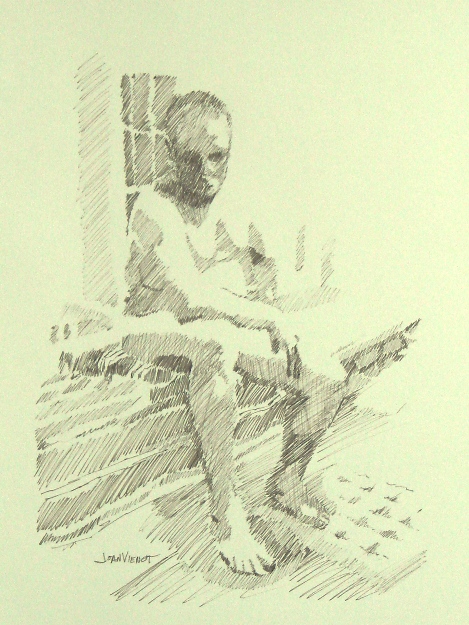
I am teaching a “Back-to-the-Basics” drawing class for the Cultural Arts Alliance of Walton County. This week we talked about three different types of lighting: silhouette, high contrast, and full-values. For a silhouette to be effective, it is essential that the subject be recognizable by its outer contours, since there is no interior development. Below are some examples of sillouette. Please forgive the quality of the photographs — they are meant for illustration only.
 |
 |
 |
In high contrast, interior development is in only two values. This allows for a more ambiguous outer contour because the development inside the form identifies the subject. Below is a drawing done in high contrast.
Full-value development is the type of treatment we are most familiar with, where we can easily identify the subject because the interior development is in a full range of values, like the drawings below:
 |
 |
Many artists will use all three of these methods of describing shape, within the same drawing or painting. Silhouettes require less attention, and if executed in middle values, can provide wonderful background imagery, effectively breaking up negative space and often repeating forms found in the foreground, as in paintings of flowers for example. Even when the lighting is shown in full values, often the lighting will simplify into high contrast or silhouette, especially towards the edges of the composition.
Silhouettes can be extremely powerful. Some of the happiest ooo’s and ahhh’s will be heard when you show a painting of a brightly colored sunset with silhouettes in the foreground.




